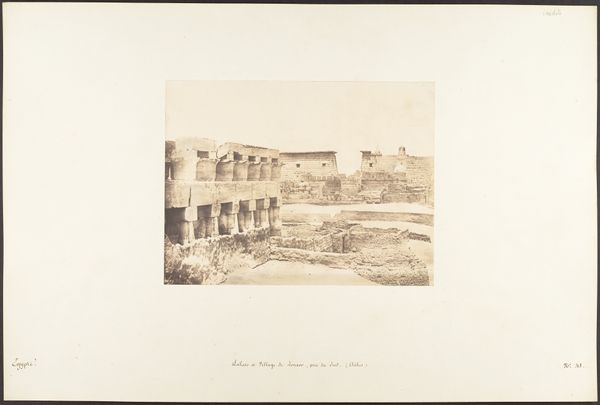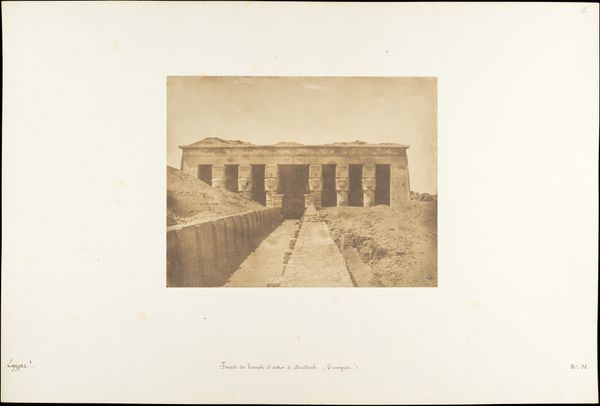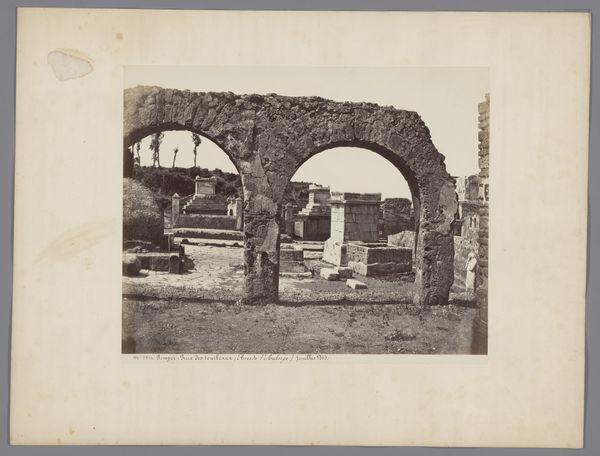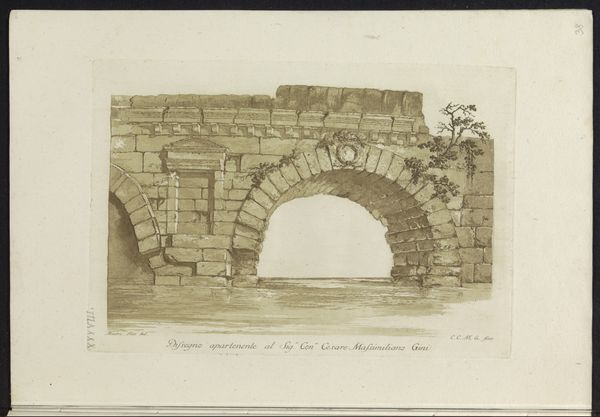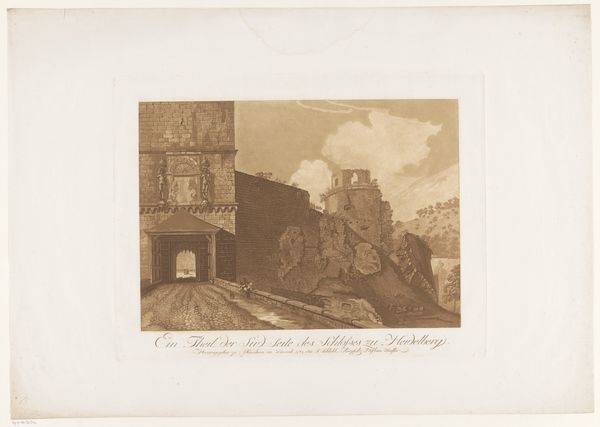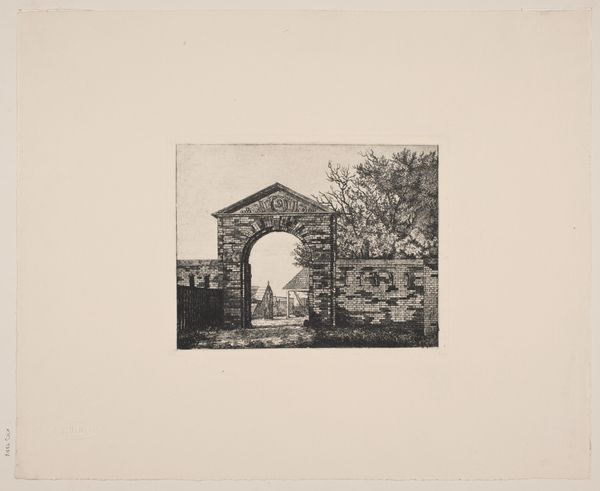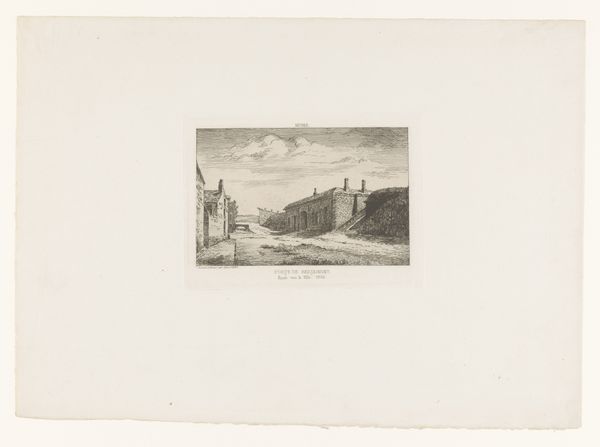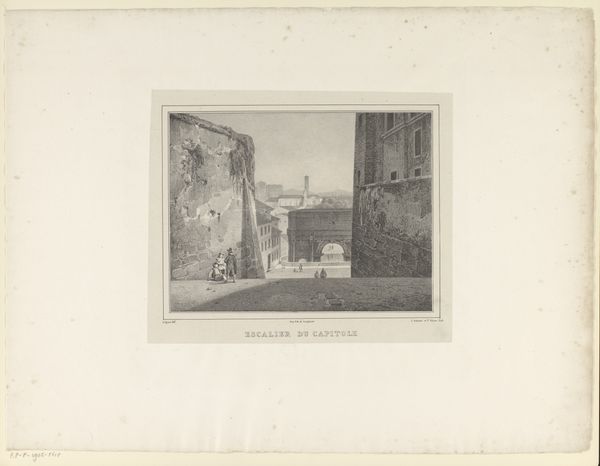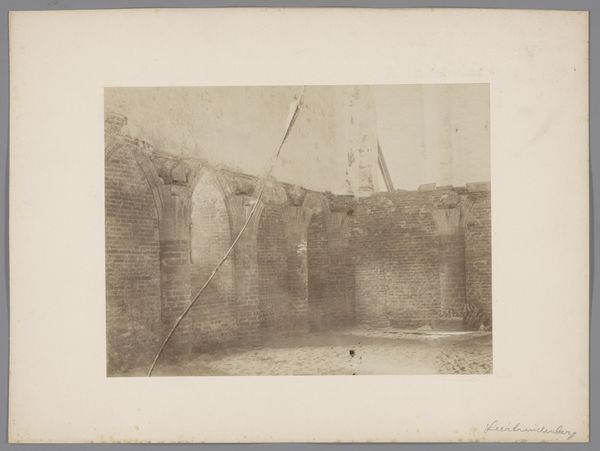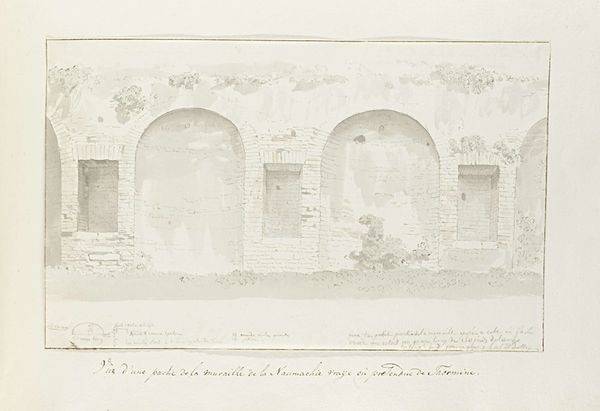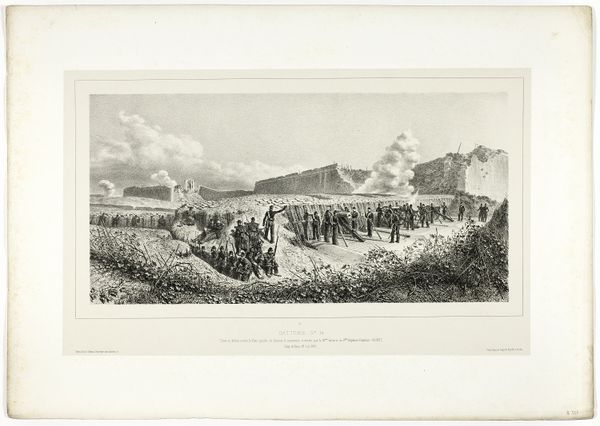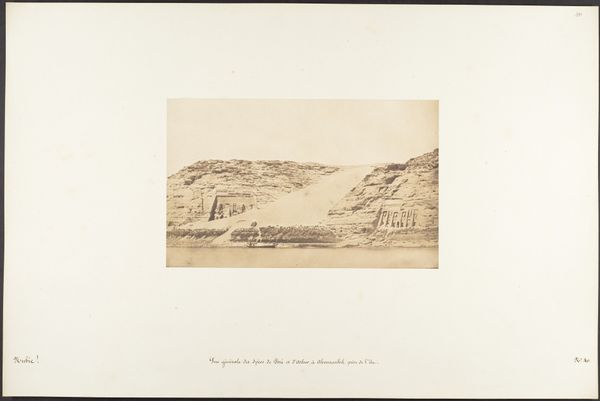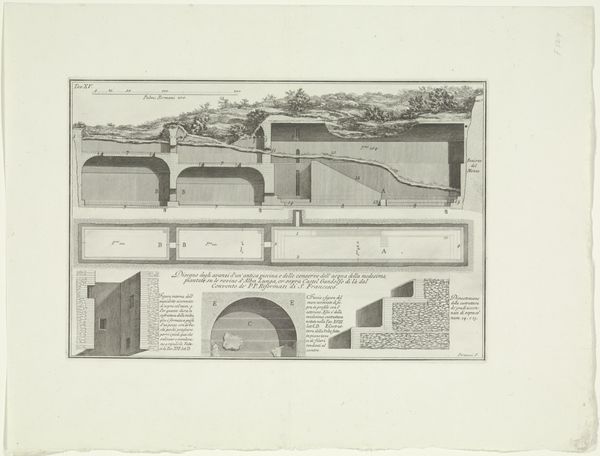
Zicht op een deel van het Louvre en de Pont des Arts in Parijs 1820
0:00
0:00
print, engraving
# print
#
old engraving style
#
landscape
#
form
#
romanticism
#
line
#
cityscape
#
history-painting
#
engraving
#
realism
Dimensions: height 249 mm, width 318 mm
Copyright: Rijks Museum: Open Domain
Editor: Here we have Jean-Baptiste Arnout's "View of part of the Louvre and the Pont des Arts in Paris," an engraving from 1820. I’m struck by how the arch frames the scene, almost like a stage for Parisian life. What do you see in this piece that might speak to its historical context? Curator: The engraving presents us with a carefully constructed perspective, doesn't it? The arch, as you pointed out, acts as a proscenium arch, but what does it frame? Not just a pretty picture, but a carefully chosen view of power, commerce, and everyday life. Think about what the Louvre represented at this time. It had shifted from a palace of monarchy to a museum for the people during the revolution, then was partially reclaimed by Napoleon as a palace, before its final iteration. This tension—between public access and controlled narratives, revolution and restoration—permeates this image. The Pont des Arts, intended to connect people, hints at this shift too. The figures along the Seine remind us who has access, and whose labor is rendered invisible by the picturesque scene. Does the clarity of the lines in this image conflict with what you feel about those competing influences? Editor: That's fascinating. I hadn't considered the tension between public and private spaces reflected in the architecture itself. I was mostly thinking about its aesthetic appeal. It is strange though that the buildings in the distance almost feel muted, compared to the arch in the foreground that the viewer seems to be under. Curator: Exactly. It invites us to consider whose perspective is privileged and who is left out of the frame. Is Arnout celebrating the restored order of things after the revolution, or subtly questioning it? Editor: I guess I'm now realizing it’s far more complex than just a pretty cityscape. Thank you. I’m learning to look beyond the surface now, towards understanding the historical undercurrents in seemingly simple works. Curator: And that's the power of art—to provoke questions and reveal the complexities of our past, isn’t it? Keep that critical eye keen!
Comments
No comments
Be the first to comment and join the conversation on the ultimate creative platform.
